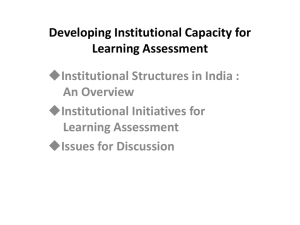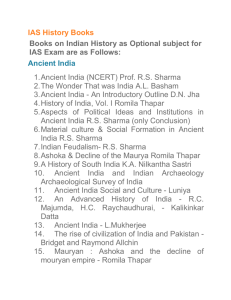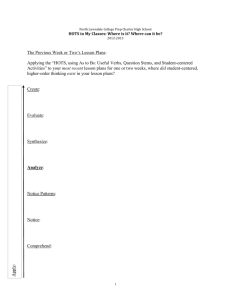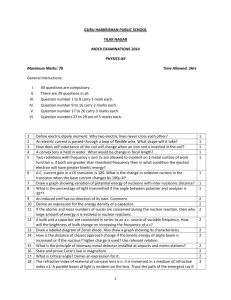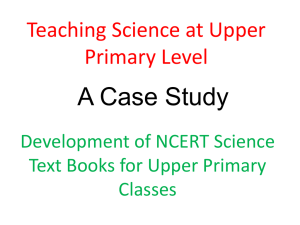word list bingo
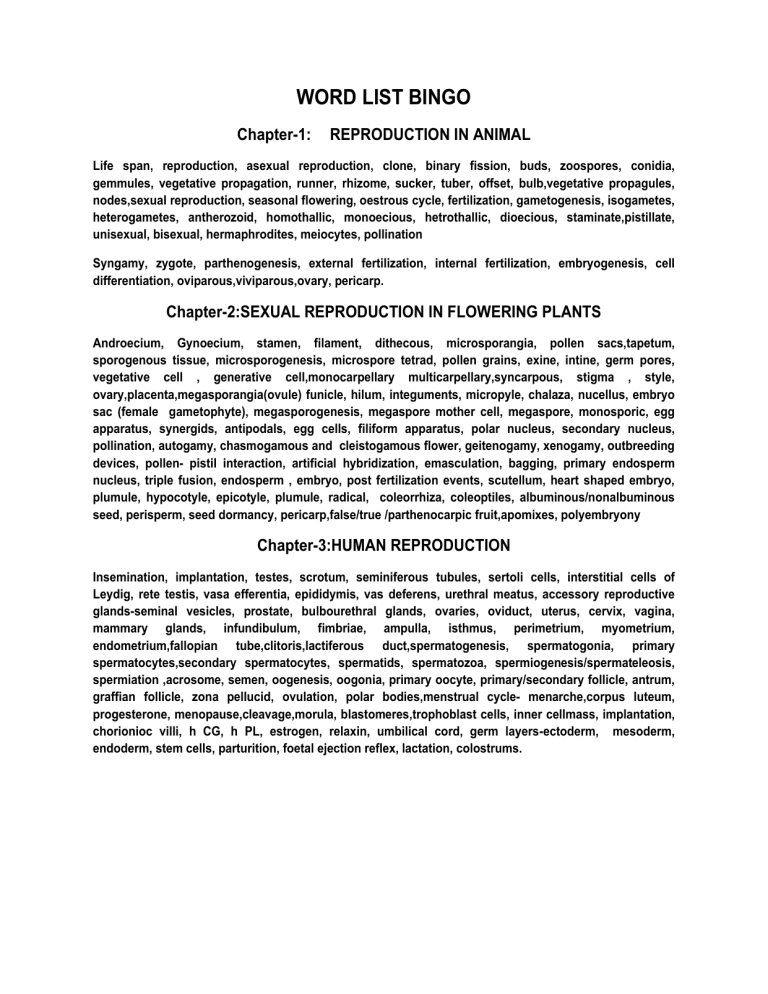
WORD LIST BINGO
Chapter-1: REPRODUCTION IN ANIMAL
Life span, reproduction, asexual reproduction, clone, binary fission, buds, zoospores, conidia, gemmules, vegetative propagation, runner, rhizome, sucker, tuber, offset, bulb,vegetative propagules, nodes,sexual reproduction, seasonal flowering, oestrous cycle, fertilization, gametogenesis, isogametes, heterogametes, antherozoid, homothallic, monoecious, hetrothallic, dioecious, staminate,pistillate, unisexual, bisexual, hermaphrodites, meiocytes, pollination
Syngamy, zygote, parthenogenesis, external fertilization, internal fertilization, embryogenesis, cell differentiation, oviparous,viviparous,ovary, pericarp.
Chapter-2:SEXUAL REPRODUCTION IN FLOWERING PLANTS
Androecium, Gynoecium, stamen, filament, dithecous, microsporangia, pollen sacs,tapetum, sporogenous tissue, microsporogenesis, microspore tetrad, pollen grains, exine, intine, germ pores, vegetative cell , generative cell,monocarpellary multicarpellary,syncarpous, stigma , style, ovary,placenta,megasporangia(ovule) funicle, hilum, integuments, micropyle, chalaza, nucellus, embryo sac (female gametophyte), megasporogenesis, megaspore mother cell, megaspore, monosporic, egg apparatus, synergids, antipodals, egg cells, filiform apparatus, polar nucleus, secondary nucleus, pollination, autogamy, chasmogamous and cleistogamous flower, geitenogamy, xenogamy, outbreeding devices, pollen- pistil interaction, artificial hybridization, emasculation, bagging, primary endosperm nucleus, triple fusion, endosperm , embryo, post fertilization events, scutellum, heart shaped embryo, plumule, hypocotyle, epicotyle, plumule, radical, coleorrhiza, coleoptiles, albuminous/nonalbuminous seed, perisperm, seed dormancy, pericarp,false/true /parthenocarpic fruit,apomixes, polyembryony
Chapter-3:HUMAN REPRODUCTION
Insemination, implantation, testes, scrotum, seminiferous tubules, sertoli cells, interstitial cells of
Leydig, rete testis, vasa efferentia, epididymis, vas deferens, urethral meatus, accessory reproductive glands-seminal vesicles, prostate, bulbourethral glands, ovaries, oviduct, uterus, cervix, vagina, mammary glands, infundibulum, fimbriae, ampulla, isthmus, perimetrium, myometrium, endometrium,fallopian tube,clitoris,lactiferous duct,spermatogenesis, spermatogonia, primary spermatocytes,secondary spermatocytes, spermatids, spermatozoa, spermiogenesis/spermateleosis, spermiation ,acrosome, semen, oogenesis, oogonia, primary oocyte, primary/secondary follicle, antrum, graffian follicle, zona pellucid, ovulation, polar bodies,menstrual cycle- menarche,corpus luteum, progesterone, menopause,cleavage,morula, blastomeres,trophoblast cells, inner cellmass, implantation, chorionioc villi, h CG, h PL, estrogen, relaxin, umbilical cord, germ layers-ectoderm, mesoderm, endoderm, stem cells, parturition, foetal ejection reflex, lactation, colostrums.
Chapter-4:REPRODUCTIVE HEALTH
Health,STDs,AIDS,Reproductive & child health care, amniocentesis, maternal mortality rate(MMR), infant mortality rate(IMR), contraceptive,natural methods, periodic abstinence, withdrawal method/coitus interruptus ,barrier methods, condoms, diaphragms, cervical caps, vaults, intra uterine devices(IUDs), pills, sterilization, vasectomy,tubectomy,Medical Termination of Pregnancy(MTP), Infertility, Assisted
Reproductive technologies(ART),in-vitro fertilization(IFV), embryo transfer, test tube baby, zygote intra fallopian transfer(ZIFT),intra uterine transfer(IUT), in-vivo fertilization, gamete intra fallopian transfer(GIFT), Intra cytoplasmic sperm injection(ICSI), artificial insemination(AI), intra –uterine insemination(IUI),Adolescence Reproductive and Sexual Health(ARSH), Reproductive Health
Chapter-5:PRINCIPLES OF INHERITANCE AND VARIATION
Inheritance, Fillial progeny, factors,traits, homologous chromosome, gene, loci/locus, allele homozygous,heterozygous ,phenotype, genotype, monohybrid cross, dominant , recessive, punnett square,segregation, dihybrid cross, independent assortment,test cross,back cross, incomplete dominance, co-dominance, chromosomal theory of inheritance,linkage, recombination,sex determination, autosomes, sex chromosomes/allosomes,homogametic, heterogametic, mutation, chromosomal aberrations, frame-shift mutation, pedigree analysis, consanguineous mating, Mendelian disorders, nondisjunction, haemophilia, sickle cell anaemia, phenylketonurea, in born error of metabolism/metabolic disorder,aneuploidy,polyploidy, syndrome, Down’s syndrome, trisomy,
Klinefeltor’s syndrome, gynaecomastia, Turner’s syndrome, rudimentary/streak gonad.
Chapter-6:MOLECULAR BASIS OF INHERITANCE
Deoxyribonucleic Acid(DNA), Ribonucleic Acid(RNA),nucleotide, nucleoside, nitrogenous bases(purine, pyrimidine), sugar(pentose-deoxyribose/ribose),Adenine,Guanine, Thymine, Cytosin,Uracil, N-glycosidic linkage, Phosphodiester linkage, double helix, Chargaff’s rule, anti parallel polarity, central dogma, histones, octamer, nucleosome, chromatin, euchromatin, heterochromatin, nonhistone chromosomal protein(NHC),Transformation(Griffith’s experiment), Transduction (Hershey-Chase experiment), replication,semiconservative replication,template DNA, Meselson-Stahl’s experiment,replication fork, helicases, topoisomerases, single stranded binding protein, primase,DNA polymerase, DNA ligase,Okazaki fragments, continuous (leading)strand, discontinuous (lagging)strand, Transcription, promoter,structural genes/cistrons,terminator,DNA dependent RNApolymerase,coding strand, polycistronic, monocistronic, coding sequence(exon),non-coding sequence(intron), messengerRNA(m
RNA), transferRNA(t RNA),ribosomal RNA(r RNA), Initiation factor, termination factor, Eucaryotic transcription, heterogenous nuclear RNA(hn RNA),capping,tailing, splicing,Translation, genetic code,codon, unambiguous, degenerate, universal, methionine/fMet, START/initiation codon(AUG),
STOP/NONSENSE CODON(UAA,UAG,UGA),frame shift (insertion/deletion) mutation, adapter molecule, untranslated region,anti codon, aminoacylation of t RNA, release factor,regulation, gene expression,operon, regulator, promoter,operator,lac-Operon, B-galactosidase,permease,transacetylase,lactose,inducer,switch on/off, inducible system,negative regulation, Human Genome Project
(HGP),GENOME, bioinformatics, DNA sequence, Expressed Sequence Tags(ESTs), Sequence Annotation
Bacterial artificial chromosome(BAC),Yeast artificial chromosome(YAC),Single nucleotide polymorphism(SNPs), DNA fingerprinting, DNA polymorphism, repetitive DNA, satellite DNA, Variable
Number Tandem Repeats(VNTRs),isolation of DNA, Electrophoresis, blotting, hybridization, probe, autoradiography.
Chapter-7:EVOLUTION
Evolution, Big bang, spontaneous generation, panspermia, Miller’s experiment, HMS Beagle,
CharlesDarwin,fitness,AlfredWallace,fitness,naturalselection,evidences,morphology,anatomy,homologo us organ, divergent evolution, analogous organ, convergent evolution, industrial melanism, adaptive radiation, branching descent, saltation, stabilising selection, directional selection, disruptive selection, gene migration, gene flow, genetic drift, mutation, genetic recombination, founder effect, geological periods, Dryopithecus, Ramapithecus, Homo habilis, Homo erectus, Homo sapiens, Neanderthal man, brain capacity.
Chapter-8:HUMAN HEALTH AND DISEASES
Health, disease ,infection, genetic disorders, life style disorders, infectious/ non-infectious, pathogen, typhoid, widal test, pneumonia, common cold, malaria, Plasmodium sp. Anopheles sp. ,Haemozoin, sporozoites, gametocytes, amoebiasis, ascariasis, elephantiasis/filariasis, Wuchereria bancrofti, ringworms, personal hygiene, public hygiene, air borne disease, water borne disease, vector borne diseases, biological control(Gambusia), Aedes, immunity, innate immunity, physical barrier, physiological barrier, cellular barrier, cytokine barrier, acquired immunity, B lymphocytes,T
,lymphocytes, antibody(Immunoglobulin), light chain, heavy chain, Humoral immune response, cell mediated immunity, active immunity, passive immunity, colostrums, IgA, vaccination, immunization, allergies, IgE, histamine, serotonin, auto immunity, lymphoid organs, bone marrow, thymus, mucosal associated lymphoid tissue(MALT),Acquired Immuno Deficiency Syndrome (AIDS),retro virus, HIV,
Enzyme Linked Immuno Sorbent Assay(ELISA),Cancer, contact inhibition, benign tumor, malignant tumor, neoplastic cells, metastatis, carcinogens, viral oncogenes ,proto oncogenes, radiotherapy, chemotherapy, immunotherapy, a-interferon ,drugs, opioids, cannabinoids, cocaine, barbiturates, amphetamines, LSD, hallucinogens, drug abuse, addiction, dependence, withdrawal syndrome, alcohol abuse , liver cirrhosis, danger signs, peer pressure.
Chapter-9:STRATEGIES FOR ENHANCEMENT IN FOOD PRODUCTION
Animal husbandry, dairy, poultry, animal breeding, inbreeding, out breeding, homozygosity, inbreeding depression, out breeding, out crossing , cross breeding, interspecific hybridization, artificial insemination, Multiple Embryo Transfer Technology(MOET), apiculture, fisheries, plant breeding, green revolution, germplasm collection, cultivars, disease resistance, mutation breeding, insect pest resistance, biofortification, Single Cell Protein(SCP), tissue culture, explants, totipotency, micropropagation, somaclones,meristem, somatic hybrids.
Chapter-10:MICROBES IN HUMAN WELFARE
Microbes, Lactic acid bacteria(LAB), Saccharomyces cerevisiae, fermentors, distillation, antibiotics, bioactive molecules, streptokinase, clot buster, cyclosporine A, immunosuppressive agents, statins, cholesterol lowering agents, sewage, primary treatment, primary sludge, flocs, Biochemical Oxygen
Demand(BOD), Activated sludge, anaerobic sludge digesters, biogas, Ganga action plan, Yamuna action plan, methanogens, Bt cotton, Bacillus thuringiensis, baculoviruses, Trichoderma spp. Integrated Pest
Management(IPM), Biofertilisers, organic farming, mycorrhiza, cyanobacteria.
Chapter-11:BIOTECHNOLOGY:PRINCIPLES AND PROCESSES
Biotechnology, genetic engineering, recombinant DNA, gene cloning, gene transfer, origin of replication, plasmid, restriction enzymes, cloning, restriction endonuclease, recognition sequence, nucleases, exonucleases, endonucleases, palindrome, sticky end ,blunt end, gel electrophoresis, elution, cloning vectors, selectable markers, transformation, antibiotic resistance, insertional inactivation, tumor, Ti plasmid, Agrobacterium tumifaciens, micro injection, biolistic/gene gun, lysozyme, cellulose, chitinase,
Polymerase Chain Reaction(PCR),denaturation, annealing, extension, thermostable DNApolymerase, bioreactors, downsteam processing.
Chapter-12:BIOTECHNOLOGY AND ITS APPLICATION
Genetically Modified Organism(GMO), Bt cotton, insecticidal proteins, cry genes, pest resistant plants,
RNA interference(RNAi)/RNA silencing, dsRNA, Genetically engineered insulin, gene therapy, ADA deficiency , c DNA, Molecular diagnosis, transgenic animals, Bioethics, Genetic Engineering Approval
Committee(GEAC), Bio piracy, Indian patent bill.
Chapter-13:ORGANISMS AND POPULATIONS
Organisms, population, communities, ecosystems, biomes, ecology, grassland,tundra, desert, coniferous forest, temperate forest, tropical forest, abiotic features, temperature,stenothermal, eurithermal, water, salinity, pH, light, soil, moisture,conformers, regulators, partial regulators,migration, suspension, hibernation, aestivation,adaptation,altitude sickness, Allen,s rule population attributes,age pyramid(expanding, stable, declining),population density, natality, mortality, immigration, emigration, exponential growth, logistic growth,mutualism, competition, predation, parasitism, commensalism, amensalism.
Chapter-14:ECOSYSTEM
Terrestrial ecosystyem, aquatic ecosystem, stratification, productivity, Gross primary productivity
(GPP),Net primary productivity(NPP),Secondary, productivity,decomposition, detritus, detritivores, fragmentation, leaching, catabolism, humification, humus, mineralization, Photosynthetically active radiaton(PAR),energy flow, producers,consumers,herbivores,carnivores,Grazing food chain(GFC),
Detritus Food Chain(DFC), food web, trophic level, standing crop, biomass, Ecological pyramids, upright pyramid, inverted pyramid, succession, pioneer, sere/seral stage, climax community, Hydrarch succession, Xerarch succession, nutrient cycling , biogeochemical cycles, ecosystem services.
Chapter-15:BIODIVERSITY AND CONSERVATION
Biodiversity, genetic diversity, species diversity, ecological/habitat diversity,mega diversity country, loss of biodiversity,habitat loss, habitat fragmentation, over exploitation, alien/non native/invasive species, coextinctions, narrowly utilitarian, broadly utilitarian,in situ conservation, endemism, hotspots, sacred groves, Ex situ conservation,Earth summit, sustainable development.
Chapter-16:ENVIRONMENTAL ISSUES
Pollution, pollutants, Environmental Protection Act(EPA), Electrostatic Precipitator(ESP), Vehicular pollution, Compressed Natural Gas(CNG), Euro ii, Bharatii, Air prevention and pollution control act, noise pollution, decibel, water pollution, domestic sewage, dissolved oxygen(DO), Oxygen sag curve, biochemical/biological oxygen demand(bod), algal bloom, planktonic, Bioaccumulation,
Biomagnificationj,solid wastes, municipal solid waste, sanitary landfills, plastic waste, e-wastes, agrochemicals, radioactive wastes, enhanced Greenhouse effect , Global warming, CFCs, stratospheric
Ozone depletion, deforestation,slash & burn agriculture, Jhum cultivation, deforestation, reforestation, chipco movement, Joint Forest Management(JFM)
QUESTION
CLASS : XII (Sc.); SUBJECT: (BIOLOGY)
M.M.:70 ; TIME: 3 HRS.
General instructions:
1.
All question are compulsory.
2.
The question paper consists of four sections A,B,C&D.Section A contains 8 questions of one mark each, Section B contains 10 questions of two marks each, Section C contains 9 questions of three marks each & Section D contains 3 questions of five marks each.
3.
There is no overall choice.However, internal choice is provided in few question where student should attempt only one of the alternative given.
4.
Wherever necessary, neat labeled diagram should be drawn.
SECTION : A
Q1.Chromosome number in meiocytes of Apple is 34. Write the chromosome number in gamete ? (1)
Q2. Which kind of evolution is shown by the thorn & tendril of bougainvillea & Cucurbita? (1)
Q3How water pollinated flowers protect the pollen grains from water ? (1)
Q4.What kind of chromosomal disorder results in the genetic disorder of Klinefelter’s syndrome? (1)
Q5.Some cells release interferons. Why? (1)
Q6.Name the bio-reactive molecule used as immunosuppressive agent & mention the organism from which it is produced ? (1)
Q7.Identify the kind of population interaction in an Orchid growing as an epiphyte on a mango branch?
(1)
Q8. What type of growth status the following pyramid represents: (1)
PC 21
PP 4
SECTION : B
Q9.Differentiate between Chasmogamous & Cleistogamous flower.
Q10 Explain the following: i) I V F ii) I C S I
Q11.i)What kind of disorder leads to the disease Phenylketonuria?
(2)
(2)
ii) What is the resultant effect of the disorder in man?
Q12. Name the missing organisms/ diseases in the table given below.
Organism
Microsporum
Disease
A
B Elephantiasis
C
Plasmodium falciporam
Amoebiasis
D
(1+1=2)
(1/2X4=2)
Q13.i) Write the use of Cyclosporin A & write the name of the organism from which it is produced?
ii)Give one example each of fermented beverages with &without distillation.
Q14. Complete the following gaps in A, B, C & D in the following table :
( 1+1=2)
(2)
Crops
Wheat
B
Variety
A
Pusa swarnim
Resistance to disease
Resistant to leaf and stipe rust
Resistant to white rust
Cauliflower C
D Pusa kamal
Resistant to black rot
Bacterial blight
Q15.i) Expand GEAC.
ii)Mention two modern biotechnological techniques for early molecular diagnosis of diseases.
(1+1=2)
Q16.Differentiate between Exponential &Logistic growth with the help of population growth curve.
(2)
Q17 .Differentiate between in-situ & ex-situ conservation of biodiversity with suitable example
(2) Q18.i) What is e-waste?
ii)Mention different kinds of impurities present in waste water. (1+1=2)
SECTION : C
Q19.i) Explain Hardy-Weinberg equilibrium with suitable example.
ii) Mention five factors affecting Hardy-Weinberg equilibrium. (2+1=3)
Q20. Draw a neat diagram of structure of a Nucleosome & label four parts of it.
OR
Draw a neat diagram of structure of Human sperm & label four of its parts. (3)
Q21. Answer the following about Opioid drugs: i)Name opioid receptors in human body ii) Give one example of opioid drug iii)How it is extracted iv) How it is taken by man v)What is its effect on human body? vi) Chemical name of the drug. (3)
Q22. Explain the following in relation to sewage treatment: i) Floc ii) BOD iii) Anaerobic sludge digesters. (3)
Q23. i)What is Biomagnification?
ii)What is meant by Green house effect?
(1+2=3)
Q24. Explain the steps involved in the process of Decomposition in the ecosystem. (3)
Q25.How biotechnological application for production of Pest resistant could be developed in Bt cotton plant. (3)
Q26. i)Explain the oral administrative contraceptive device & time period of its effectiveness.
ii) Give example of one copper releasing & one hormone releasing IUDs.
(2+1=3)
Q27. Mention the six steps followed in the technique of DNA fingerprinting.
SECTION : D
(3)
Q28.i)Name the male accessory glands & its function in man. ii)Explain the hormonal changes that occur during Menstrual cycle in human with the help of graphical diagram.
iii)What is Placenta?
(1+3+1=5)
OR
i)Explain the stages of Megasporogenesis in flowering plants with the help of suitable diagram.
ii)Draw a neat labeled diagram of mature pollen grain.
iii)Differentiate between Perisperm & Pericarp.
(3+1+1=5)
Q29.i) Draw a neat labeled diagram of a Transcription unit & define the following:
a) Function of RNA polymerase III b) Splicing c) Tailing.
ii)What is Frame-shift insertion?
(3+2=5)
OR i) Differentiate between Benign tumour & Malignant tumour. ii) Mention two methods of detection & diagnosis of cancer. iii) Write any two methods for prevention of drug abuse in adolescence.
(1+2+2=5)
Q30. i) Complete the following palindrome sequence and name the restriction endonuclese that recognizes this.
5’
G ? A ? T C
C ? T ? A G
3’
3’
5 ‘
ii) Explain three methods for transfer of recombinant DNA in competent host in rDNA technology.
iii) What is meant by Insertional inactivation ? (1+3+1=5)
QUESTION
CLASS : XI (Sc.); SUBJECT: (BIOLOGY)
M.M.:70 ; TIME: 3 HRS.
General instructions:
All question are compulsory.
The question paper consists of four sections A, B, C & D.Section A contains 8 questions of one mark each, Section B contains 10 questions of two marks each, Section C contains 9 questions of three marks each & Section D contains 3 questions of five marks each.
There is no overall choice.However, internal choice is provided in few question where student should attempt only one of the alternative given.
Wherever necessary, neat labeled diagram should be drawn.
SECTION : A
Q1.Name the kind of Leucoplast that stores oil & protein?
Q2. Where do you find Porins?Mention its function.
Q3.In which stage of cell division chromosome number could be counted easily?
Q4.Name the following organisms:- i) A cyanobacterium used as Protein rich food?
(1)
(1)
(1) ii) A Dianoflagellate causing Red tide?
Q5.Locate Companion cells in plant tissues & write its function.
(1)
(1)
Q6.Name the component parts in mouth of Cockroach.
Q7.Certain marine brown & red algae produce large amount of hydrocolloids that are commercially used.
(1)
(1)
(1)
Name those two substances.
Q8.Identify the symbols used in writing the floral formula of a flower :- i) % ii) G
SECTION : B
Q9.Differentiate between Symplastic & Apoplastic pathway of movement of water in plants.
Q10. Write one point difference between: i) Peptide bond & Glycosidic bond ii) Nucleoside & Nucleotide
(2)
(2)
Q11.Fill in the blanks with suitable secondary metabolites/Examples :- i) Pigment : _____________ ii) ______ : Lemon grass oil
iii)Toxins : ____________
iv)______ : Rubber (2)
Q12. Write the composition of Fluid Mosaic model proposed by Singer & Nickolson. (2)
Q13. What is Heterocysts ? Give two examples where heterocyst is found.
(1+1=2)
Q14. Complete the following gaps in A, B, C & D in the following table using suitable words : (2)
A
B
C
Roots of Rhizophora
Leaves of Calotropis
Fruit of Mango
D A scar on seed coat
Q15.i) What is Mesosome? Write its function. ii) Omnis cellula-e cellula.” Illustrate.
(1+1=2)
Q16.Differentiate between Areolar tissue & Adipose tissue with suitable example.
Q17 .Identify the following : i) Periderm ii) Conjoint vascular bundle.
Q18.Draw a neat labelled diagram of different kinds of chromosomes based on the position of centromere.
OR
Draw a neat labelled diagram of a Bacteriophage.
SECTION : C
(2)
(2)
(2)
Q19.Mention the events that happen during the following phases of cell cycle: i) G1 phase ii) S phase iii) Quiescent phase
(3)
Q20. Draw a neat diagram of a monocotyledonous seed & label different parts of it.
OR
Draw a neat diagram of Digestive system of frog & label different parts of it.
Q21. Answer the following :
i)Name the central cavity in sponges through which water passes.
ii) Name the part in Ctenophores having external ciliated rows meant for locomotion.
iii)Name the specialised cells in flat worms that help in osmoregulation.
(3)
iv)Name the kind of scales that cover the skin of bony fishes.
v)Name the part that represent ear in Amphibians.
vi) Name the lateral appendages that help in swimming in Nereis.
Q22. Classify different types of Nephridia in Earthworm & locate each type in it.
(3)
(3)
Q23. The transpiration driven ascent of xylem sap depends on some physical properties of water.
Explain three such properties of water.
Q24. Explain the activity of following enzymes: i) Hydrolase ii) Lyase iii) Transferases.
(3)
(3)
Q25.Mention the universal rules to be followed in Binomial nomencleture.
Q26. Which group of fungi are called as imperfect fungi? State reasons.
(3)
(3)
Q27. Mention two ways that Ammonia can be utilized by plants through Nitrogen cycle.
SECTION : D
Q28.i)Differentiate between Chordates & Non- chordates with suitable examples. ii)Write the name of the group in which following structures are found & mention function of each:-
(3)
a) Choanocytes b) Malpighian tubules c) Water vascular system
(2+3=5)
OR
i)Explain the steps involved in the process of Double fertilization in flowering plants with the help
of suitable diagram.
ii)What does Haplo-diplontic phases of life cycle signify? Give suitable example.
(3+2=5)
Q29. Describe the floral characters of the family Fabaceae.Write the floral formula & floral diagram of it.
OR i) Categorise various kinds of Aestivation & explain each with suitable diagrammatic representation.
ii)What is Pericarp?
(3+2=5)
Q30. i)Explain the steps involved in Prophase I of Meiosis I with suitable diagram.
ii) Write the significance of Meiosis.
(3+2=5)
__________________
LIST OF IMPORTANT DIAGRAM
Chapter1:
Fig1.2(a) and (b),NCERT,page5
Fig18(a) and (b),NCERT,page16
Chapter2:
Fig2.1,NCERT,page20
Fig2.3(a),(b) and (c),NCERT,page22
Fig2.7(d),NCERT,page25,(anatropous ovule the fig should be turned upside down)
Fig2.8,NCERT,page26
Fig2.12c and d,NCERT,page32
Fig2.13,NCERT,page34
Fig2.15a(maize seed),NCERT,page37
Chapter3:
Fig3.1,NCERT,page43
Fig3.4,NCERT,page46
Fig3.5,NCERT,page47
Fig3.6,NCERT,page48
Fig3.7,NCERT,page49
Fig3.8,NCERT,page49
Fig3.9,NCERT,page50
Fig3.12,NCERT,page53
Chapter6:
Fig6.1,NCERT,page96(for HOTS)
Fig6.2,NCERT,page98(for HOTS)
Fig6.4,NCERT,page99(for HOTS)
Fig6.8,NCERT,page107(for HOTS)
Fig6.9,NCERT,page108(for HOTS)
Fig6.12,NCERT,page114(Consult any reference book for correct diagram)
Chapter7:
Fig7.1,NCERT,page128(for HOTS)
Fig7.8,NCERT,page136(for HOTS)
Chapter8:
Fig8.1,NCERT,page148(for HOTS)
Fig8.4,NCERT,page151
Chapter10:
Fig10.2,NCERT,page180
Fig10.8,NCERT,page186(HOTS)
Chapter11:
Fig11.1,NCERT,page196(HOTS)
Fig11.4,NCERT,page199(HOTS)
Fig11.1,NCERT,page196(HOTS)
Chapter12:
Fig12.3,NCERT,page211(HOTS)
Chapter13:
Fig13.1,NCERT,page220(HOTS)
Fig13.3,NCERT,page223(HOTS)
Fig13.4,NCERT,page227(HOTS)
Fig13.5,NCERT,page230(HOTS)
Chapter14:
Fig14.1,NCERT,page244(HOTS)
Fig13.5,NCERT,page230(HOTS)
Chapter15:
Fig15.1,NCERT,page260(HOTS)
Fig15.2,NCERT,page262(HOTS)
Chapter16:
Fig16.1,NCERT,page271(HOTS)
Fig16.3,NCERT,page274(HOTS)
Fig16.6 16.7,NCERT,page281(HOTS)
Notes: Diagram should be drawn in pencil, labeled with pencil, a caption depicting the Fig must be given.
Diagram should be drawn scientifically without stressing on unnecessary shades/colour.
CHAPTER-2
HIGH ORDER THINKING (HOTS) QUESTIONS
ent species are kept stored? grass family. Differentiate between coleoptile and coleorhiza?
produce such seeds every year? How can this problem be solved.
CHAPTER- 3
Q. Why cleavage is called as fractionating process?
A-Cleavage results in increase in number of blastomeres but decrease in size of blastomeres.
Q. Which factor determines the pattern and speed of cleavage?
A- Amount and distribution of yolk.
Q. Name the extra-embryonic membranes in human embryo and mention its function.
A- Yolk Sac – Vestigial, act as extra embryonic gut.
Amnion-Protect embryo, acts as shock absorber, prevents desiccation of embryo.
Allantois- Stores nitrogenous wastes, acts as extra embryonic kidney.
Chorion – Helps exchange of gases, acts as extra embryonic lung.
Q. Which type of Placenta is found in man?
A- Chorionic ( finger-like out growth ) , haemochlorial , metadiscoidal(Chorionic villi exposed like disc) and deciduate (part of uterine wall expelled during parturition ).
Q. Why testis lies outside the body cavity in scrotal sac ?
A- Scrotal sacs act as thermo regulators, keep testicular temperature 2 degrees lower than the normal body temperature for normal spermatogenesis.
Q. What happens if testes fail to descend into scrotal sac?
A-High temperature of abdomen will kill the spermatogenetic tissues of the testis and no sperm will be formed (azoospermia) causing sterility , the phenomenon called Crytorchidism.
Q Vitellogenesis is an important phenomenon after fertilization . Give reasons .
A-After fertilization Vitelline membrane is transferred into fertilization membrane which checks polyspermy
Q Penetration of sperm is a chemical process. Illustrate.
A Sperm head i.e. acrosome contains sperm lysin / hyaluronidase enzyme which help dissolving hyaluronic acid binding the follicular cells of corona radiata from penetration of sperm nuculeus to egg nucleus
Q In morula stage the cells divide without any increase in size why ?
A Since, zona pellucida of egg cell remain intact till completion of cleavage.
Q What is the importance of fertilizin–Antifertilizin reaction?
A Ovum secretes fertilizin( glyprotein or mucopolysaccharide ) which has a number of spermophiliic sites on its surface where sperm can be bound by their antifertilizin site (on sperm head containing acidic amino acid) In this process thinning out of number of sperms take place to avoid polyspermy.
CHAPTER-4
(REPRODUCTIVE HEALTH)
Q.Why oral contraceptive pills are called as combined pills?
Ans.Since the same medicine contains mainly Progestogen& Estrogen that shows combined action inhibiting ovulation as well as contraception.
Q.Amniocentesis is illegal for detection of sex of foetus.Why?
Ans. The method is misused for identification of female child during foetal development & aborted due to a misconception of rejection of female child by the society.
Q.Removal of gonads can not be considered as contraceptive options. Why?
Ans. Contraception basically includes preventing unwilling conception without affecting normal body function that can be disrupted by removal of gonads.
Q. What are the essential features for an ideal contraceptive?
Ans. Ideal contraceptive should be user friendly, comfortable & easy to use, without any side effect & completely effective against pregnancy.
Q. All RTIs are STDs but all STDs are not RTIs. Justify.
Ans.Reproductive tract infections are basically transferred through sexual contact & hence may be termed as sexually transmitted diseases whereas some STDs like Hepatitis-B, AIDS are not caused due to infection of reproductive tract although transmitted through sexual contact.
Q. Now a day’s number of childless couples is decreasing. Why?
Ans.Various improvised scientific methods are available for infertile couples to have a child through assisted reproductive technology.
Q.How CVS technique is more advanced than Amniocentesis?
Ans. Chorionic Villi Sampling technique may be applied by 8 th to 10 th week of pregnancy whereas
Amniocentesis is done in about 14 th to 15 th week. Hence, abortion is easier & less risky in CVS techniques.
Q. ‘Test tube baby’ has raised several legal problems. Explain.
Ans. Method used for test tube baby need artificial need artificial collection of sperm & ovum, implantation in surrogate mother in some occasions which very often discouraged by the society.
Couples become selective & avoid natural process.
Q. Population explosion is the resultant effect of reproductive health awareness. Why?
Ans. Reproductive health awareness resulted in reduced infant mortality rate , discouraging early marriage, contraceptive devices, control against diseases could increase in population.
Q.What is meant by induced abortion?
Ans. It is an intentional or voluntary termination of pregnancy before full term due to unprotected intercourse or failure of effect of contraceptive during coitus or rape.
CHAPTER 5
Principle of inheritance and Variation:
1 If a dominant allele for tall plants is represented by the letter D, what letter should represent the corresponding recessive allele?
2 In cats, the allele (S) for short fur is dominant to the allele (s) for long fur.
(a) What is the genotype of a true-breeding, long-furred cat?
(b) What is the phenotype of a cat with the genotype Ss?
(c) In an Ss genotype, which allele is expressed in the phenotype?
(d) Which of the fo1lowing genotypes is (i) heterozygous (ii) homozygous dominant?
SS, Ss, ss
3 In rabbits, assume that the dominant allele (B) produces black fur. The allele (b) for white fur is recessive to B.
(a) What colour fur will each of the following rabbits have?
Rabbit 1 Rabbit 2 Rabbit 3 Rabbit 4 genotypeBB BbbBbb
(b) Which of them will breed true?
(c) Which rabbits are homozygous for coat colour?
(d) If rabbits 1 and 4 were mated together and had 12 babies, how many of these would you expect to be black?
(e) If rabbits 2 and 3 are interbred and produce several litters, totalling 48 babies, how many white babies would be predicted by the laws of genetics?
(f) If rabbits 3 and 4 are mated together on several occasions and have 50 babies
Altogether, how many of their babies would you 'expect' to be black?
4 The alleles controlling the ABO blood groups are given the letters I A (group A), I B (group B) and i
(group O). On the drawings below, write in the alleles on the chromosomes for each of the blood groups. (clue : The first one has been done for you) group A group B group AB group O
I A I A or or
5 Give three examples of human disorders which are caused by the action of a single pair of alleles. In each case say whether the harmful allele is dominant or recessive to the non-harmful allele.
6 In humans, maleness or femaleness is determined by a pair of sex chromosomes called
X and Y.
(a) What is the genotype for males?
(b) What is the genotype for females?
(c) what are the symbols used for represent male and female genotype in birds?
7 (a) In humans, is it the sperm or the ovum which determines the sex of the offspring?
(b) Give a reason for your answer.
8 When a particular gene is said to be ‘sex-linked’, on which chromosome is that gene usually present?
9 colour-blindness is a sex-linked inherited condition controlled by a recessive allele. Use the symbols X and Y for the sex chromosomes and N and n for the alleles for normal or defective colour vision to show the genotypes of
(a) a normal male (d) a colour-blind female
(b) acolour-blind male (e) a normal (carrier) female.
(c) a normal (non-carrier) female
10 Use the genotypes you have written for your answer to question 9 to show the
Chances of (a) a son being colour blind, (b) a daughter being a carrier, resulting
From a marriage between a normal man and a carrier woman.
11. In a cross between pure tall plants with green pods and a pure dwarf plant with yellow pods, how many short plants do you expect in F2 generation a) 9, b) 3 c) 4 d) 1
12. Is it possible that a male with an extra X chromosome in his genome? If so how it can happen?
Mention its phenotypic characters?
13. a disputed child with blood group ‘O’ was claimed by two couples; their blood groups are are as following: mother father
Couple-I
Couple-II
A
O
B
AB
State with your knowledge of genetics which couple could be the real parent of the child? Also mention their genotypes.
Note for questions related with pedigree refer study material pg no.54 -58
Few hinds
3. b)-Rabbit 1Rabbit 4
c) Rabbit 1Rabbit 4
d) 12
e) 3:1
f) 50%
5.Haemophilia (recessive), albinism (recessive), phenylketonuria (recessive), red-green colourblindness
(recessive), sickle-cell anaemia (partially recessive) (any three)
11) 4
12. Klinefelterssyndrone.
13. couple I when both are heterozygous
CHAPTER 7
Explain the following:
1.
2.
Biological evolution is the sum total of genetic changes.-Substantiate.
In terms of evolution ‘fittest’ does not necessarily means strongest.-Explain(the fittest are not necessarily the strongest individuals, but those individuals who are the bearers of advantageous inherited traits that allow them to survive and reproduce more than others-natural selection.)
3.
characteristics
Besides, descent from common ancestor two species can share common
.-Explain(due to evolutionary convergence).
4.
5.
Genetic drift affects small populations.-Explain.
The footprint of evolutionary change can be found throughout the naturesubstantiate the statement highlighting predator-prey relationship in terms of natural selection.
(Natural selection favours individuals whose characteristics improve either their ability to consume others or their ability to avoid being consume.)
6.
Indiscriminant use of antibiotics will jeopardize your future battle against
bacteria-Justify.(every time we use antibiotics we are applying selection pressure ,killing off any nonresistant bacteria thereby , we are actually helping to speed the evolution of resistance to antibiotics)
CHAPTER 8
Human health and disease
1.
1) Why do children of metro cities of India suffer from allergies and asthma?
2.
Ans (Hint.-Pollution )
3.
4.
2) A patient has lost his immunity.
5.
i) Name the diseases associated with it.
6.
ii) Name the confirmatoroe test to diagnose the disease.
7.
iii)Why did he lost his immunity.
8.
Ans (Hint:-AIDS)
9.
10.
3)A person claimed that he has seen sounds,heardcolours and smelt light.
11.
i)What could be the possible reason?
12.
ii) Name two chemicles responsible for this conditions.
13.
iii) Mention any one source for these chemicles.
14.
Ans (Hint:- Drug Abuse)
CHAPTER 09
Q.1.In mung bean resistance to yellow mosaic vein was developed.(3)
1) Name the phenomenon used.
2) How it is induced?
3) What happens to genes in this method?
HINT:1) Mutation breeding 2)mutations can be induced by chemicals or gamma radiations 3)base sequences within genes are changed to create variations that results in new characters .
Q.2.What is hidden hunger? what are the defects caused? Name a method of production of improved quality food that can minimize/prevent it.(3)
Hint: 3billion people suffer from micronutrient,protein and vitamin deficiencies.
Increases risk of diseases, reduces lifespan & mental abilities.
Biofortification.
Q.3.Conventional agriculture is not able to meet demand of food for ever increasing population.SCP can serve as an alternate.Justify.(3)
Hint: Spirulina & Methylophilus methlotrophus.
Q.4.a)Following are some statements arrange them in sequence beginning from the first step(2)
1.Transferred to a surrogate mother.
2.It is either mated with an elite bull or artificially inseminated.
3.Fertilized eggs at 32 cell stage are recovered non surgically.
4.It produces 6 to 8 eggs instead of one egg which they normally yield per cycle.
b)These steps are of which method of animal breeding?(1)
Q.5.Animal protein can be used extensively for feeding growing population.However nothing much has been done in this area.Suggest some alternative ways how animal proteins can be obtained on alarge scale cost effectively?(5)
CHAPTER10
Q.1.How is sewage subjected to various treatments in sewage treatment plant? (3)
Hint: explaination of primary and secondary treatment.
Q.2. Biofertilisers are preferred over chemical fertilizers - Substantiate ?
Hint: Mention the eco friendly sustainable use of biofertilisers.
Q.3.Three water samples labeled A (river water); B(untreated sewage water) and C(secondary effluent)were taken for BOD test. The BOD values were 20mg/l; 8mg/l &400mg/l, respectively. Which water sample is most polluted? Assign the correct label to each assuming the river water is relatively clean? (3)
Hint: sample A BOD 20mg/l; sample B BOD 8mg/l &sample C 400mg/l
Q.4.A) Who gave the medicinal importance of Antibiotics? (1)
B) Give the functional importance of Propionibacterium. (1)
c) Name the bacterium that produces the insecticidal ’cry protein’? (1)
Q.5.Supply the scientific terms for the following (5)
1) The waste and waste water produced by residential and commercial sources and discharged into sewers.
2) An approach to farming based on biological methods that avoid the use of synthetic crop/livestock production inputs.
3) A group of gram positive bacteria that carry out lactic acid fermentation of sugars.
4) The sludge produced by primary treatment in a wastewater treatment plant.
5) A systems approach that combines a wide array of crop production practices with careful monitoring of pests and their natural enemies.
Hint: a)sewage b)organic farming c)LAB d)primary sludge e)IPM
Q.6.why should biological control of pests and pathogens be proffered to the conventional use of chemical pesticides? Explain how the following microbes act as biocontrol agents:(1+1+1) a)Bacillus thuringiensis b)Nucleopolyhedroviruses
Q.7. During secondary treatment of the primary effluent how does the significant decrease in BOD occur? (3)
Q.8a) Draw a labelled diagram of a typical biogas plant. hint:5) floating gas holder 3)sludge 9) digester 1) Dung and water b) Give the role of spent slurry
Q.9 Explain Why :
(a) Cow dung is used in the generation of biogas.
(b) A small amount of curd is added in fresh milk to convert it into curd.
(c) Baculovirus are used in narrow spectrum insecticidal application.
Q.10 What are antibiotics? Give two examples. What is their significance?(3)
Q.11. Give one example and one use of the following: a) Free living fungi b) Symbiotic fungi c) Free living bacteria (3)
Q12) How is it that the Cry protein produced by Bacillus thuringiensis (Bt) does harm the bacteria but only killsthe insect larvae? (3)
5 Marks Questions
Q1)Explain how microbes are used in sewage treatment?
Q2)What do you understand by integrated pest management (IPM)? Explain with example and state its importance
Q5) Differentiate Antibodies and antibiotics Q6) How are biofertilizers different from fertilizers such as NPK that we buy in the market? Justify the role of Rhizobium as a biofertilizer
CHAPTER 11
1) Why don’t restriction enzyme digest chromosomal DNA in bacterial cells ?
2) Why do bacteria have plasmids?
3) Why thermostable DNA polymerase is essential in PCR?
4)Eukaryotes do not have restriction endonuclease, then how they manage with normal endonuclease enzyme?
5) It is advisable to use different restriction endonucleases to cut the vector DNA and source DNA.Why
?
6) Uncontrolled recombinant DNA technology experiments is dangerous to mankind. Comment on it.
167
4) Foreign DNA + plasmid =…………??…………
5 ). Complete the above sequence of diagrammatic representation and name it.
(a) Which is the most commonly used matrix in gel electrophoresis ?
(b) What is the source of it?
6) Find the ‘odd one out and write why that is ‘odd’
(a) Sal I, Pst I, Cla I, BamH I, pBR 322
(b) Bacteria, Virus, Gene-gun, Fungi
7) Detect the mismatch from the following and replace the wrong match with a right one
(a) ECOR I –Bacteria
(b) Ethidium Bromide- Gel electrophoresis
(c) Lysozyme- Fungi
(d) Palindrome sequence-Restriction enzyme
8). Name the enzyme involved in the following process:
(a) Repeated amplification of DNA fragments.
(b) Formation of short piece of RNA strand for annealing.
(c) Breaking of bacterial cell to release DNA and other macromolecules.
(d) Cutting and rejoining DNA fragments.
(e) Formation of m-RNA
(f) Joining of foreign DNA fragments with plasmid.
9)Explain how recombinants and non- recombinants are differentiated on the basis of colour production in the presence of a chromogenic substrate. Name that procedure.
Have some more
Few clues
1.
When scientist make an animal superior by view of genotype, introducing some foreign gene in it , the phenomenon is called ______________.
2.
Why DNA is unable to pass through cell membrane?
3.
Why don’t the restriction enzymes destroy the DNA of the organism in which they are produced?
4.
What function the enzymes DNA ligase perform in genetic engineering?
5.
What are the essential features of a vector?
6.
Which property of plasmid makes them ideal vectors for gene cloning
7.
Discuss the use of molecular probes in forensic science for identification of criminals.
8.
What is vector less gene transfer? What are the methods used to transfer genes directly in plants?
9.
Name two bacterias found to be very useful in genetic engineering?
10.
Agrobacterium tumefaciens is known as “natural genetic engineer of plants” why?
11.
What do you understand by insertion inactivation genetic engineering? State its usefulness
12.
What is the significance of ori-gene (origin of replication) in a plasmid?
13.
Name the substance used to stain DNA fragments separated in gel electrophoresis?
How they are visualized
5. refer concept map
6.Self replicating
8.gene gun, microinjection etc
9.Escherichia coli ,Agrobacterium tumefaciens
10 the can cause Crown Gall disease by transferring Ti plasmid to higher plants naturally
13 Ethidium bromide/UV light
CHAPTER12:
1.Gene medicine refers to the use of gene manipulation technology to ameliorate or even permanently cure disease in human-Name the technique.(Gene therapy)
2. Agrobacterium tumefaciens are considered as natural genetic engineer.-Justify.
3.The bacterium Bacillus thuringiensis provides the major source of insect resistant gene-clarify.
4. 'RNAsilencing is a form of genomic defense'-elucidate the statement taking M. incognitia as example.
CHAPTER13:
Organism,population
1.When two species of Paramoecium(P. caudatum and P. aurelia were grown together in the laboratory, at first both the species grow in number,eventually however, P. caudatum declines in number while P. aurelia continues to increase in number.-Which type of animal interaction can substantiate the above phenomenon?(competition)
2.Plants like beech, Oak and Pine gain amino acids from fungal associationship , while the fungi in return receive carbohydrates and vitamins from the tree-What type of interaction can be inferred from this?(Mutualism)
3.In the stomach of ruminants huge number of Cellulolytic bacteria are present which help the herbivores to digest the plant material, in turn, the bacteria receive Nitrogen that has been secreted or ingested into the rumen in the form of urea-Name the type of interaction.
CHAPTER 14
1 Why is dry weight chosen for expressing the the biomass of a species ?
Hint To avoid variation in weight due to seasonal moisture difference
2 In a pyramid of biomass drawn below name themembers of each trophic levels
1one which issupported
2the one which supports.
In which ecosystem such apyramid is found?
Ans 1zooplankton
2 phytoplankton
Aquatic ecosystem
3Explain why ecological succession will be faster in forest devastated by fire than on bare rock?Also compare succession in case of an abandoned land after floods with that on a bare rock?
CHAPTER 15
Explain Why ?
1.
Indonesia exhibits more biological diversity than Polland. (Mention why there is more
biodiversity in tropics)
2.
National Parks is a better option for the conservation of biodiversity than zoological gardens.(Mention about the advantages of in-situ conservation over ex-situ conservation).
3.
Loss of Key stone species from an ecosystem will be a major threat to ecosystem function.(Give your answer on the basis of ‘rivet popper hypothesis’.)
4.
India is a megadiversity country.
5.
Within your sibling there are lots of variation although, all of you have the same parents(answer
on the basis of genetic diversity).
6.
India nurtures a lot greater biodiversity than Norway.(answer the question based on greater
ecosystem diversity in India than in Norway).
7.
Justify the killing of elephants at North Bengal in the light of biodiversity conservation.(Habitat loss/fragmentation/shrinkage by the construction of rail line through the elephant corridor in
North Bengal leads to man – animal conflict and resultant loss of biodiversity).
8.
‘The unique mangrove biodiversity of Sunderbans will totally wiped away ‘ (Frame your answer
on the basis of global climate change and subsequent biodiversity loss)
9.
Find the odd one out:
Eicchorniasp., Lantana sp. ,Partheniumsp. , Oryza sativa.(Besides, Oryza sativa all other are invasive species)
CHAPTER 16
1) What is the norms set by Euro-II for petrol and Diesel vehicles
2) Name the Phenomena Which Keeps the Earth Warmer than Moon.
3) Name the important ozone depleting substances.
4) Why is thermal pollution harmful for aquatic life?
5) Why are cloudy, dusty & humid Nights warmer than clear dust free and dry nights?
6)(Fig 16.3 pg No. 274-biology text book for class xii)
In the above graph what does A & B depict?
LIST OF ABBREVIATIONS AND THEIR EXPANSION
Chapter2
:
MMC: Megaspore Mother Cell
PEC: Primary Endosperm Cell
Chapter3
:
LH: Luteinising Hormone
FSH: Follicle Stimulating Hormone hpl : Human placental lactogen hcg: human chorionic gonadotropin
Chapter4
:
STDs; Sexually Transmitted Diseases
RCH: Reproductive and Child Health Care
MMR: Maternal Mortality Rate
IMR: Infant Mortality Rate
IUDs: Intra Uterine Devices
MTP: Medical Termination of Pregnancy
VD: Venereal Diseases
RTI: Reproductive Tract Infection
HIV: Human Immunodeficiency virus
PID: Pelvic Inflammatory Diseases
ART: Assisted Reproductive Technologies
IVF: In vitro Fertilization
ZIFT: Zygote intra fallopian transfer
IUT: Intra Uterine transfer
GIFT: Gamete intra fallopian transfer
ICSI: Intra Cytoplasmic Sperm Injection
AI: Artificial Insemination
IUI: Intra uterine insemination
Chapter6
: sn RNAs: small nuclear RNAs hn RNAs: heterogenous nuclear RNA
HPG: Human Genome Project
ESTs: Expressed Sequence Tags
BAC: Bacterial Artificial Chromosomes
YAC: Yeast Artificial Chromosomes
SNPs: Single Nucleotide Polymorphism
VNTR: Variable Number of Tandem Repeats
Chapter8
:
PMNL: Polymorpho nuclear leucocytes
CMI: Cell mediated immunity
MALT: Mucosal Associated Lymphoid Tissue
AIDS: Acquired Immuno Deficiency Syndrome
ELISA: Enzyme Linked Immuno-sorbent Assay
NACO: National AIDS Control Organisation
MRI: Magnetic Resonance Imaging
CT: Computed Tomography
Chapter9
:
SCP: Single Cell Protein
Chapter10
:
LAB: Lactic Acid Bacteria
BOD: Biochemical/Biological Oxygen Demand
Chapter11
:
PCR: Polymerase Chain Reaction
Chapter12:
RNAi: RNA interference
GMO: Genetically Modified Organism
ADA: Adenosine deaminase deficiency
GEAC: Genetic Engineering Approval Committee
GPP: Gross Primary PRODUCTIVITY
NPP: Net Primary ProductivityGFC: Grazing Food Chain
DFC: Detritus Food Chain
DU: Dobson unitCFCs: Chloroflurocarbons
JFM: Joint Forest Management
